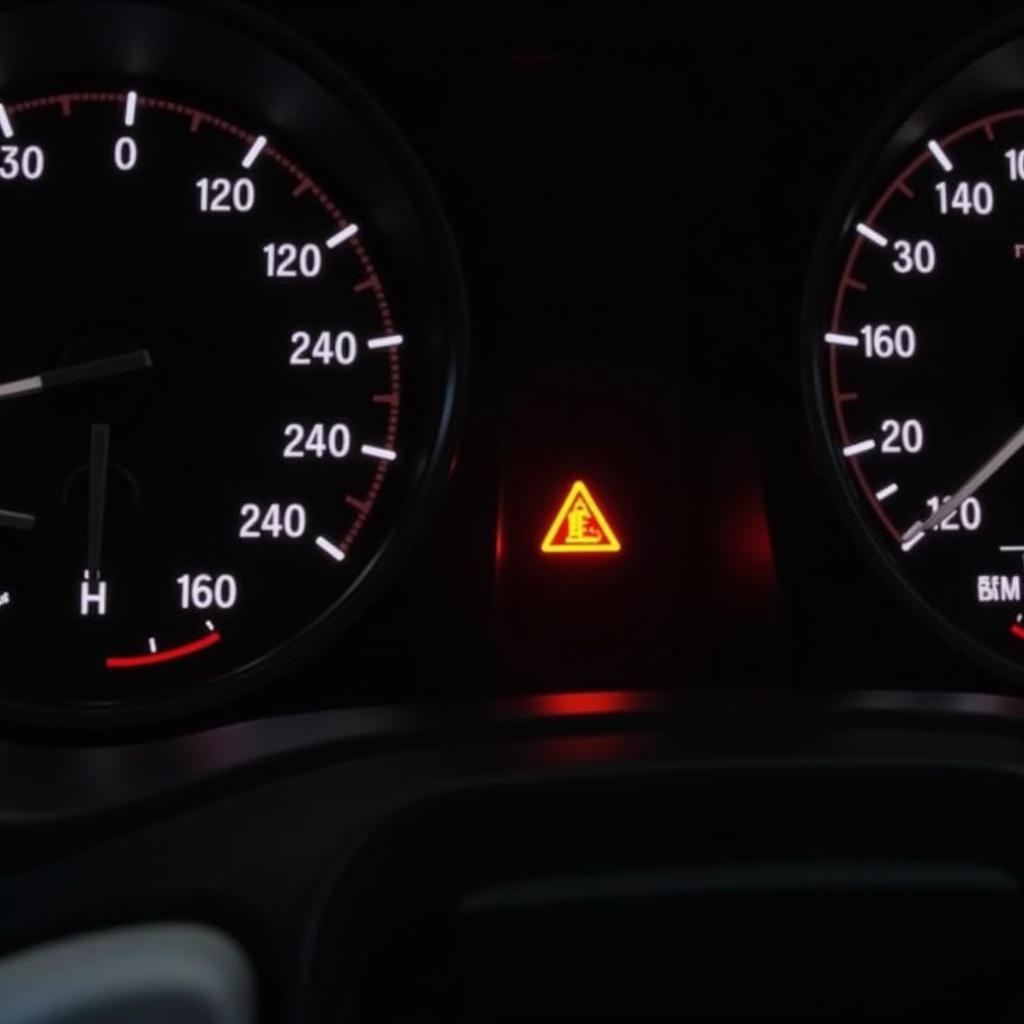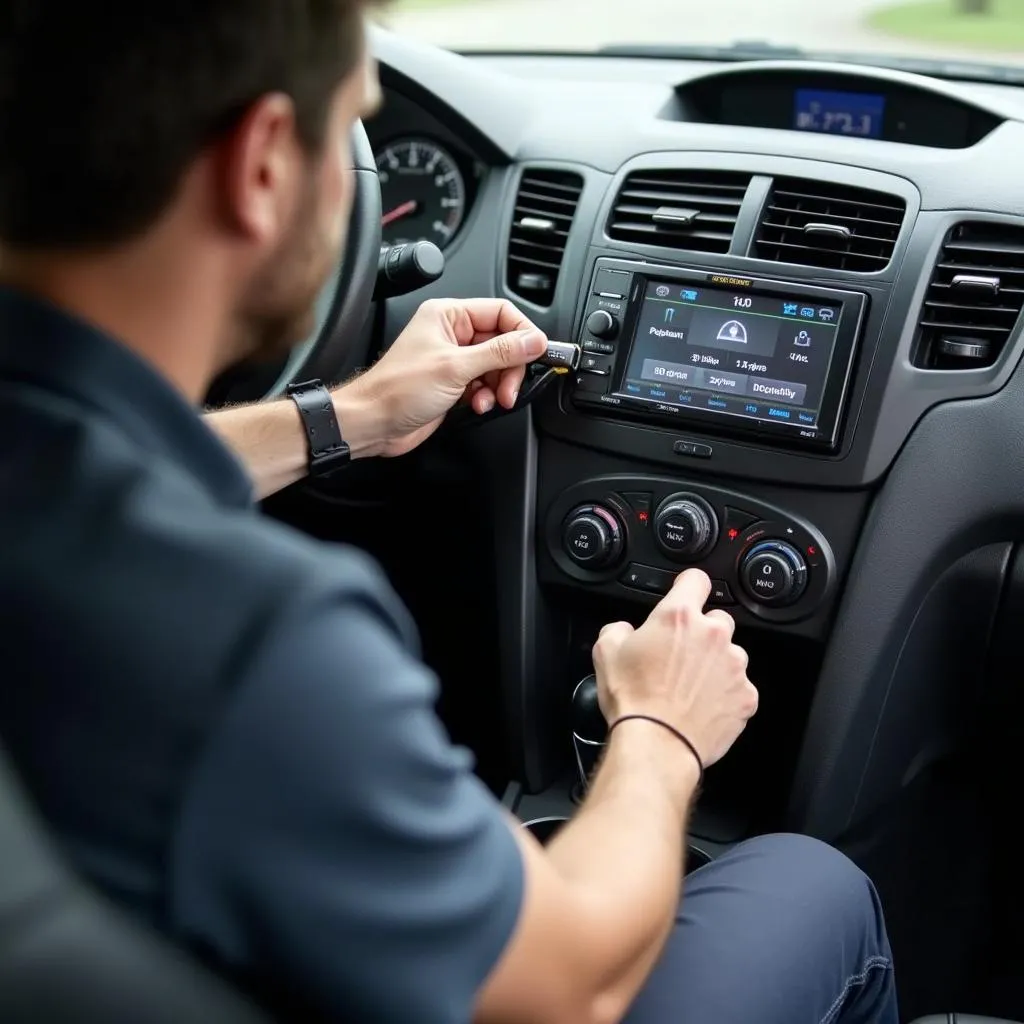A glowing tyre pressure warning light on your Seat Ibiza dashboard can be an unwelcome surprise. It signals a potential issue with your tyre pressure, which can affect your car’s handling, fuel efficiency, and safety. This guide provides a comprehensive look at understanding and resetting the tyre pressure warning light in your Seat Ibiza.
Understanding Your Tyre Pressure Warning Light
The tyre pressure monitoring system (TPMS) in your Seat Ibiza is designed to alert you of underinflated or overinflated tyres. When the system detects a pressure outside the recommended range, the warning light, often a yellow exclamation mark within a tire-shaped outline, illuminates on your dashboard.
Ignoring this light can lead to:
- Reduced fuel economy: Underinflated tyres create more rolling resistance, forcing your engine to work harder and consume more fuel.
- Compromised handling and braking: Improper tyre pressure can negatively impact your vehicle’s steering response and braking distance, increasing the risk of accidents.
- Premature tyre wear: Underinflation causes the tires’ sidewalls to flex excessively, leading to uneven wear and a shortened lifespan.
- Tyre blowouts: In extreme cases, driving with significantly underinflated tyres can lead to a dangerous blowout.
Common Causes of Tyre Pressure Light Activation
Before you reset the warning light, it’s crucial to understand why it was triggered in the first place. Here are some common culprits:
- Slow puncture: A small puncture might be causing a gradual loss of air pressure.
- Temperature changes: Seasonal changes or significant temperature fluctuations can affect tyre pressure.
- Sensor malfunction: The TPMS sensors themselves can fail or experience issues, leading to inaccurate readings.
- Recent tyre change: If you recently had a tyre change or rotation, the TPMS might need to be reset.
How to Reset the Tyre Pressure Warning Light in Your Seat Ibiza
Resetting the TPMS light in your Seat Ibiza can vary slightly depending on the model year and trim level. However, the general process is as follows:
- Check your tyre pressure: Use a reliable tyre pressure gauge to check the pressure in all four tyres, including the spare. Ensure the tyres are cold (driven for less than one mile) for the most accurate reading.
- Inflate or deflate tyres as needed: Adjust the tyre pressure to match the recommended PSI (pounds per square inch) listed on the sticker inside your driver’s side doorjamb or your owner’s manual.
- Locate the TPMS reset button: This button is often located on the center console, near the gear shift, or underneath the steering wheel. Refer to your owner’s manual for its exact location.
- Turn the ignition to the “on” position: Don’t start the engine.
- Press and hold the TPMS reset button: Continue holding the button until the TPMS warning light blinks a few times and then turns off. This usually takes a few seconds.
- Turn the ignition off, then start your engine: The TPMS light should be off. If it remains illuminated, repeat the process or consult a qualified mechanic.
Note: Some Seat Ibiza models may require you to drive the vehicle at a certain speed for a specific distance (usually around 15-20 mph for a few miles) for the system to recalibrate and turn off the warning light.
When to Seek Professional Help
While resetting the TPMS light yourself is usually a straightforward process, there are instances when it’s best to consult a professional. Seek help from a qualified mechanic if:
- The TPMS light comes on again shortly after resetting: This could signal an underlying issue with your tyres, sensors, or the TPMS itself.
- You’re unable to locate the reset button or are unsure about the process: Refer to your owner’s manual or seek assistance from a Seat dealership or qualified mechanic.
- You suspect a sensor malfunction or other TPMS-related problem: A professional can diagnose and repair any issues with the system.
Tips for Maintaining Proper Tyre Pressure
Regularly maintaining proper tyre pressure is crucial for your safety and your Seat Ibiza’s performance. Here are some helpful tips:
- Check your tyre pressure monthly: Use a reliable gauge and make it a habit to check your tyre pressure at least once a month, and before long trips.
- Don’t forget the spare tyre: Ensure your spare tyre is also inflated to the recommended pressure.
- Invest in a tyre pressure gauge: A quality gauge is an inexpensive but valuable tool for any driver.
- Be mindful of temperature changes: Remember that tyre pressure fluctuates with temperature.
- Inspect your tyres regularly for wear and damage: Look for cuts, bulges, or uneven wear patterns, and address any issues promptly.
Maintaining Your Seat Ibiza for Optimal Performance
“Regularly checking and maintaining your tyre pressure isn’t just about avoiding a warning light; it’s about maximizing your safety and your vehicle’s efficiency,” says John Miller, a senior automotive technician at Miller’s Auto Repair. “A well-maintained vehicle is a safer and more enjoyable vehicle.”
 Seat Ibiza Dashboard TPMS Light
Seat Ibiza Dashboard TPMS Light
Remember, the tyre pressure warning light is a valuable safety feature in your Seat Ibiza. By understanding how it works, how to reset it, and how to maintain proper tyre pressure, you can ensure a smoother, safer, and more fuel-efficient driving experience.


